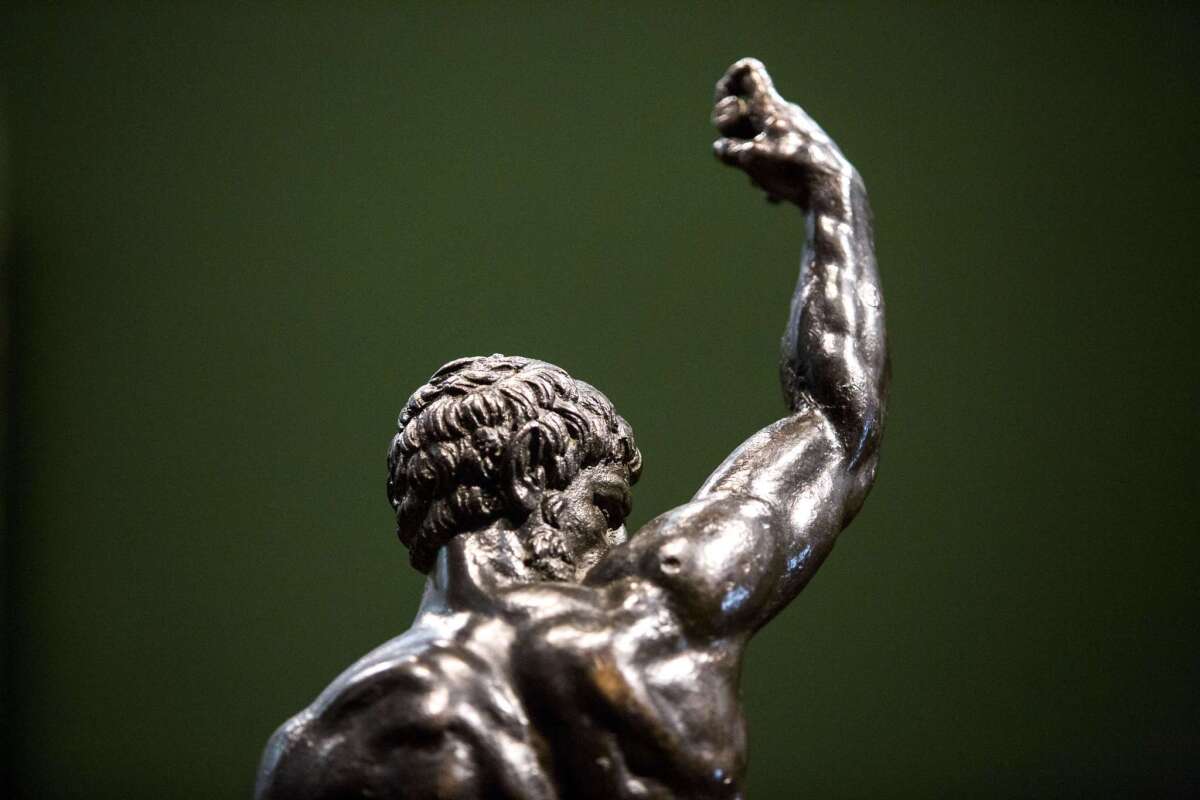Weird and wonderful Michelangelo bronzes stun the art world

The news that a pair of early 16th century bronzes might have been made by famed Renaissance man Michelangelo Buonarroti hit the art world like a thunderbolt Monday — or perhaps, like a pair of naked guys entering the party on the backs of panthers.
The Fitzwilliam Museum in Cambridge, England, announced that the materials and the anatomical attributes of the three-foot-tall Rothschild bronzes, as the sculptures are known, were consistent with work produced by Michelangelo. And the news has been generally well-received.
A vital piece of evidence in this attribution consists of an early 16th century drawing connected with the artist’s studio that shows a nude male figure on a panther. That sketch is housed at the Musée Fabre in Montpellier, France.
Hyperallergic’s Ben Sutton, who has an extensive report on the announcement, has helpfully posted an image of the Musée Fabre’s drawing: a copy made by an unknown draftsman of Michelangelo’s original sketch. (Sutton also makes some pretty hilarious connections to Katy Perry’s Super Bowl halftime show and the cheetah scene in “Harold and Kumar Go to White Castle” — worth a read.)
A story in the New York Times tracks the provenance of the pieces (now in a private British collection), noting that at one point, in the late 19th century, Michelangelo was the attributed author of the works. But for whatever reason (possibly a rivalry), this was dismissed.
My colleague David Ng points out that most of Michaelangelo’s sculptures are marble, though the artist was believed to have worked with bronze as well. “If the attribution bears out,” Ng writes, “the works would be the ‘only surviving Michaelangelo bronzes in the world by his hand,’ the museum said on its website.”
Perhaps the most interesting read in all of this is critic Jonathan Jones’s take over at the Guardian. He asks the basic question: “Are they any good?” His conclusion: Thee male figures are superb; the felines, not so much. He also does the service of putting the pieces into the context of Michelangelo’s work and life.
And the somewhat surreal image of a man riding a panther? Well, it’s not that unusual. It’s typical in depictions of Bacchus, the Roman god of wine and intoxication, and Dionysus (as Bacchus was known by the Greeks). Many ancient mosaics and sculptures show the phenomenon — such as this marble Roman sculpture, from the first to second century AD, that is in the permanent collection at the Metropolitan Museum of Art in New York.
Either way, all of this will certainly be wildly debated in the coming months. The team that made the new attribution announcement is holding an international conference on July 6 to discuss its findings and present its research.
The bronzes go on view Tuesday through Aug. 9, at the Fitzwilliam Museum. Trumpington Street, Cambridge, England, fitzmuseum.cam.ac.uk.
Find me on Twitter @cmonstah.
More to Read
The biggest entertainment stories
Get our big stories about Hollywood, film, television, music, arts, culture and more right in your inbox as soon as they publish.
You may occasionally receive promotional content from the Los Angeles Times.











